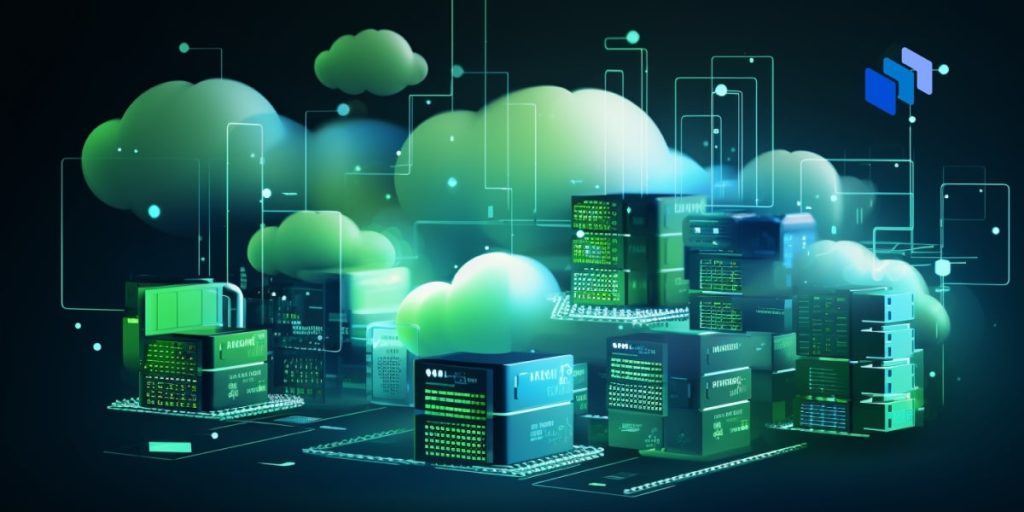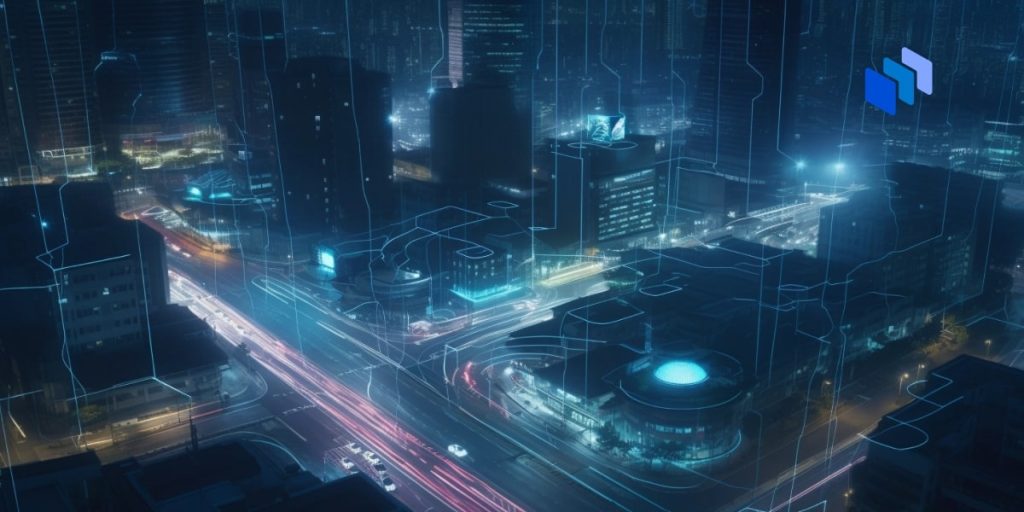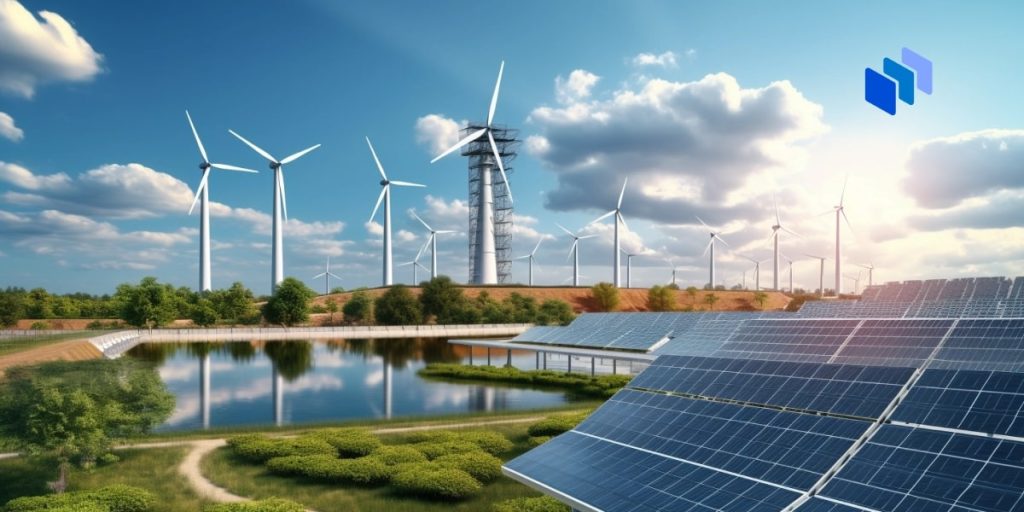Increasing solar power generation will play an important role in the transition to clean energy, and artificial intelligence (AI) systems can help enhance efficiency, maximize electricity production, and provide users with a new level of control over their power consumption.
Solar panel systems generate electricity by converting sunlight into electrical power using photovoltaic panels. These typically operate based on fixed parameters typically determined during the installation phase. However, the system’s performance is affected by various external factors, such as weather conditions, shading, and the angle and orientation of the solar panels. These factors can reduce the overall efficiency of the system.
There are applications for AI throughout the solar energy supply chain, from panel design and raw material optimization to system installation and maintenance. But how can AI ensure that solar energy systems produce as much energy as possible at the lowest cost once they are installed?
How AI Can ‘Intelligently’ Optimize Solar Panel Systems
By analyzing data collected by rooftop and ground-mounted solar panels, inverters, and smart energy devices, AI algorithms can provide insights into maximizing energy production and reducing costs. Energy systems can then adjust their operations in real time through various ways:
1. Remote Monitoring
AI enables remote monitoring of solar panel systems, allowing users to track performance, identify issues, and receive real-time notifications about potential problems. This can minimize downtime and ensure that the system operates at its maximum capacity as often as possible.
Remote monitoring is particularly beneficial for homeowners with rooftop solar installations who may not have the expertise to regularly check and identify problems.
2. Predictive Analytics
AI algorithms can analyze weather and climate data to predict future conditions, anticipating periods of low sunlight or potential shading, enabling the system to adjust to maintain optimal power output.
Predictive analytics also help consumers plan for periods when their solar generation will decline, enabling them to adjust their energy usage in response.
As more households and businesses install solar panels with battery storage, utilities, and power grids, operators can use AI to detect patterns and manage their power dispatch strategies. They could even remotely regulate solar energy supply to the grid and battery charging or discharging cycles to balance supply and demand across the network.
3. Predictive Maintenance
Analyzing data from sensors on solar panels can help predict when maintenance is required, preventing system outages and improving overall energy output.
Monitoring microinverters or direct current (DC) power optimizers, which control the output of individual solar panels, enables AI algorithms to detect and diagnose glitches automatically. Suppose one panel in a system is shaded or faulty. In that case, it reduces the overall design’s efficiency and can cause other boards to overload and fail, so repairing or replacing any underperforming components is critical.
AI models can also automatically identify and forecast requirements for routine maintenance or suggest procedures to increase overall yield. This can save time and money by proactively maintaining the system in optimal condition instead of waiting until expensive reactive repairs are required, and the system is already down.
For instance, Turkish company Solarify provides an AI-based performance monitoring platform for solar power plants that monitors the status of all devices in the system and detects faults.

Meanwhile, Portugal-based Jungle.ai’s Canopy AI product uses deep learning to monitor wind and solar assets.
The platform automatically detects downtime and quantifies lost production by comparing output to production models, identifies solar panel degradation, and provides alerts for abnormal currents and voltages.
Detecting soiling and shading on solar panels is critical to optimizing cleaning schedules to avoid losing power output. Italian renewable energy firm Enel Green Power has collaborated with Italian startup REIWA to develop SandStorm, an autonomous cleaning robot that uses a specially designed system to clean solar panels.
4. Dynamic Adjustment
Solar panel systems installed on fixed structures are static. While trackers can adjust the angle and tilt of panels to follow the sun throughout the day to maximize sunlight absorption, AI can make the system even more responsive.
AI-based system management platforms can make dynamic adjustments based on real-time data to enable peak generation efficiency under varying conditions. For example, if solar panels become shaded by cloud cover or debris, such as a tree branch, AI can automatically redistribute the load to unshaded boards.
5. Load Forecasting and Optimization
In addition to monitoring solar output, AI algorithms can analyze data showing historical power consumption patterns and predict future demand based on factors such as the season, days of the week, time, and specific events.
By understanding likely electricity demand patterns, AI systems can use smart devices to optimize the operation of appliances so that they consume power during periods of peak energy production. This can increase energy efficiency, reducing carbon emissions and energy bills.
6. Energy Storage Optimization
AI algorithms can play a crucial role in optimizing the integration of energy storage systems, such as batteries and even electric vehicles, into the power system. AI platforms can analyze electricity generation and consumption to determine the optimal times to charge and discharge batteries to balance supply and demand.
This maximizes the use of stored energy and helps users save money by reducing the amount of power they draw from the grid when prices are high or even selling excess energy back to the grid.
READ MORE: Bi-directional EV Charging — Powering Your Home From Your Car?
Benefits of AI Integration Into Solar Energy Systems
The integration of AI into solar panel installations has the potential to offer several benefits to homeowners and businesses:
- Increased energy efficiency: The ability to analyze and respond to real-time data helps to ensure that solar panels generate power at peak efficiency under various conditions. This improves overall electricity output, reducing dependence on the power grid.
- Cost savings: By optimizing power generation, consumption, and storage, AI-connected systems can make the most of lower off-peak energy prices, reduce their electricity demand, and sell electricity back to the grid at the highest available prices.
- Lower environmental impact: Increasing energy efficiency using AI can reduce consumption from non-renewable energy sources, reducing carbon emissions.
- Improved user experience: By automating complex processes and providing real-time insights, AI makes it easier for homeowners, solar farms, and grid operators to monitor and manage their installations through user-friendly interfaces.
- Extending system lifespans: Remote monitoring and predictive maintenance can help to identify potential issues before they become significant problems, contributing to extending the lifespan of solar panels and connected equipment.
Challenges to Integrating AI Into Solar Installations
While the integration of AI into solar installations offers the potential to optimize energy production and efficiency, there are several challenges that developers and power companies need to address:
- Costs: Implementing AI involves upfront costs for advanced hardware, sensors, and software systems, which can be a barrier for many homeowners and businesses. Regular updates and monitoring can also contribute to ongoing maintenance costs that must be carefully managed.
- Data security: Solar installations generate large volumes of sensitive data about energy consumption patterns and system performance. This could be compromised without adequate cybersecurity measures to protect the data from unauthorized access or misuse.
- Privacy regulations: Striking a balance between using data for optimization and safeguarding privacy is essential for compliance with rules, especially regarding residential energy systems.
- Standardization: The solar industry has diverse technologies, manufacturers, and equipment types, which can hamper communication between various components.
The Bottom Line
As technology advances, integrating AI into solar panel systems represents an opportunity to increase the efficiency of renewable electricity.
The ability of AI algorithms to analyze real-time data, predict weather conditions and maintenance requirements, and make dynamic adjustments to optimize energy production and consumption, can help to advance the clean energy transition.
AI-powered systems can increase energy efficiency, reduce costs, and limit the environmental impact of electricity consumption, paving the way for a more sustainable future.










